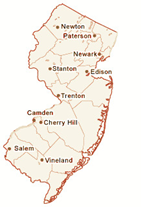Elaine Weiss, Policy Director
What would a “good” state Unemployment Insurance system look like?
Reports during the pandemic of crashing state programs and pleas for support from jobless workers have spurred long-overdue calls to overhaul our country’s difficult to navigate, technologically obsolete, and haphazardly constructed Unemployment Insurance (UI) system. The Biden-Harris Administration’s Department of Labor making UI reform a high priority, and researchers’ and advocates’ calls for a broad range of improvements – from increasing benefit levels and duration to expanding eligibility and making programs widely accessible – prompt a critical question: what would a “good” state UI system look like?
We know all too well at this point what a bad one looks like: Arizona’s very low maximum weekly benefit, Georgia’s months-long delays in processing appeals, prompting a class-action lawsuit by the Southern Poverty Law Center, and Florida’s exercise in UI self-sabotage, in which the former Governor led the way in revamping the state’s program to prevent unemployed workers from receiving benefits. We understand that the higher the share of workers of color in a state, the less accessible and generous the system is likely to be. And we know that women are at a disadvantage due to their disproportionate representation in low-wage, part-time, and non-standard work situations.
New Jersey’s steady progress
 Amidst all the focus on dysfunctional systems, however, one state with a UI program that is delivering supports efficiently to a large share of its jobless workers has gotten too little. New Jersey’s unique and steady progress merits more attention. As states across the South and elsewhere have engaged in an arms race to reduce the share of jobless workers on their rolls and reduce benefits for those who do obtain them, New Jersey has taken the high road, protecting its diverse workforce from the risks associated with losing a job and, in the process, strengthening, rather than weakening, its economy. With other states seeking to understand how they might boost their own systems, and which legislative and administrative components are most critical to doing so, New Jersey offers valuable guidance.
Amidst all the focus on dysfunctional systems, however, one state with a UI program that is delivering supports efficiently to a large share of its jobless workers has gotten too little. New Jersey’s unique and steady progress merits more attention. As states across the South and elsewhere have engaged in an arms race to reduce the share of jobless workers on their rolls and reduce benefits for those who do obtain them, New Jersey has taken the high road, protecting its diverse workforce from the risks associated with losing a job and, in the process, strengthening, rather than weakening, its economy. With other states seeking to understand how they might boost their own systems, and which legislative and administrative components are most critical to doing so, New Jersey offers valuable guidance.
Drawing on a combination of data and interviews with key state officials conducted by Academy Senior Fellow Stephen Wandner, the Academy is producing a brief that lays out the key steps to constructing a robust UI system. While by no means perfect, New Jersey illustrates how centering workers in reform efforts, and putting in place the kinds of core improvements called for by scholars and advocates alike, can help effect meaningful improvement. Stay tuned for publication in the next few weeks, and please reach out to Policy Director Elaine Weiss with questions or suggestions.


What a comprehensive guide! I’ve been struggling with this issue for a while, and your tips are a lifesaver. Thank you!